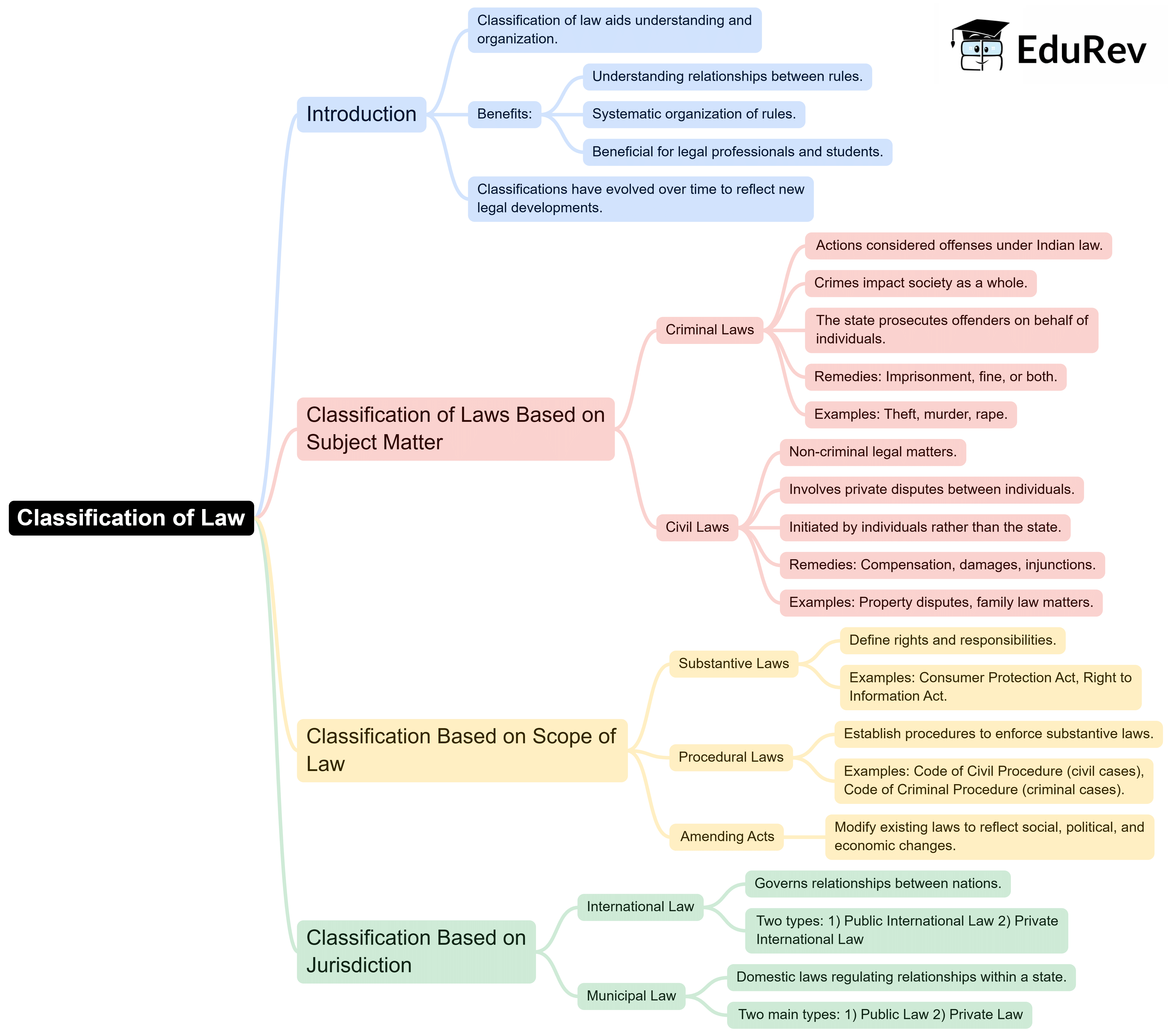Humanities/Arts Exam > Humanities/Arts Notes > Legal Studies for Class 11 > Mind Map: Classification of Laws
Mind Map: Classification of Laws | Legal Studies for Class 11 - Humanities/Arts PDF Download

The document Mind Map: Classification of Laws | Legal Studies for Class 11 - Humanities/Arts is a part of the Humanities/Arts Course Legal Studies for Class 11.
All you need of Humanities/Arts at this link: Humanities/Arts
|
69 videos|80 docs|25 tests
|
FAQs on Mind Map: Classification of Laws - Legal Studies for Class 11 - Humanities/Arts
| 1. What are the main classifications of laws in the humanities and arts? |  |
Ans. The main classifications of laws in the humanities and arts typically include constitutional law, criminal law, civil law, administrative law, and international law. Each classification serves distinct purposes and governs different aspects of human behavior and societal organization within the context of the humanities and arts.
| 2. How do cultural laws influence artistic expression? |  |
Ans. Cultural laws play a significant role in shaping artistic expression by establishing guidelines and norms that reflect societal values and beliefs. These laws can affect the content, form, and distribution of art, ensuring that it aligns with the cultural and moral standards of the community, while also protecting the rights of artists to express their creativity.
| 3. What role do intellectual property laws play in the arts? |  |
Ans. Intellectual property laws are crucial in the arts as they protect the rights of creators over their original works. These laws, including copyright, trademark, and patent laws, ensure that artists receive recognition and financial benefits from their creations, thereby encouraging innovation and creativity within the arts.
| 4. How have historical changes in law impacted the development of the humanities and arts? |  |
Ans. Historical changes in law, such as the abolition of censorship laws and the establishment of human rights legislation, have significantly impacted the development of the humanities and arts by allowing greater freedom of expression. These legal advancements have enabled artists to address social issues, explore new themes, and challenge existing norms without fear of retribution.
| 5. What are the implications of international law on cultural heritage and the arts? |  |
Ans. International law has important implications for cultural heritage and the arts, particularly in terms of protection against theft, illicit trafficking, and destruction of cultural property. Treaties and conventions, such as the UNESCO World Heritage Convention, aim to safeguard cultural heritage, promoting respect and preservation of diverse artistic expressions across nations.
Related Searches
















